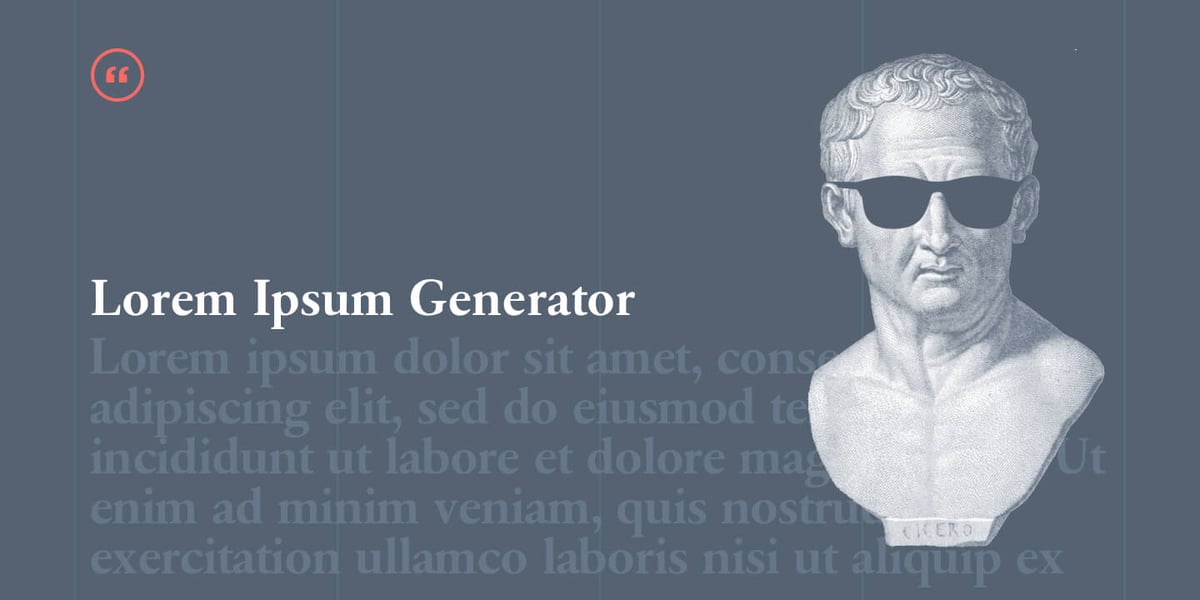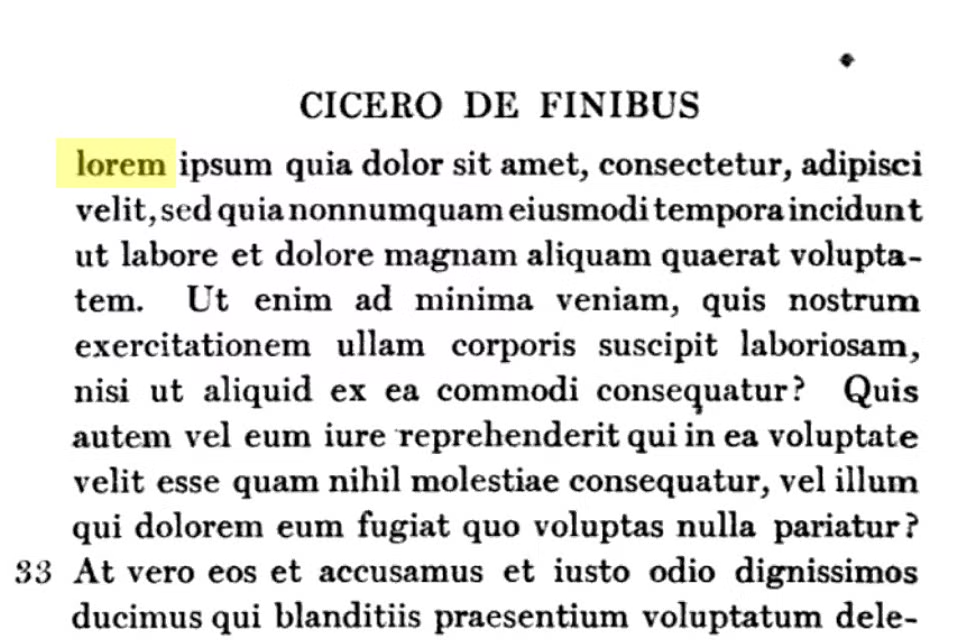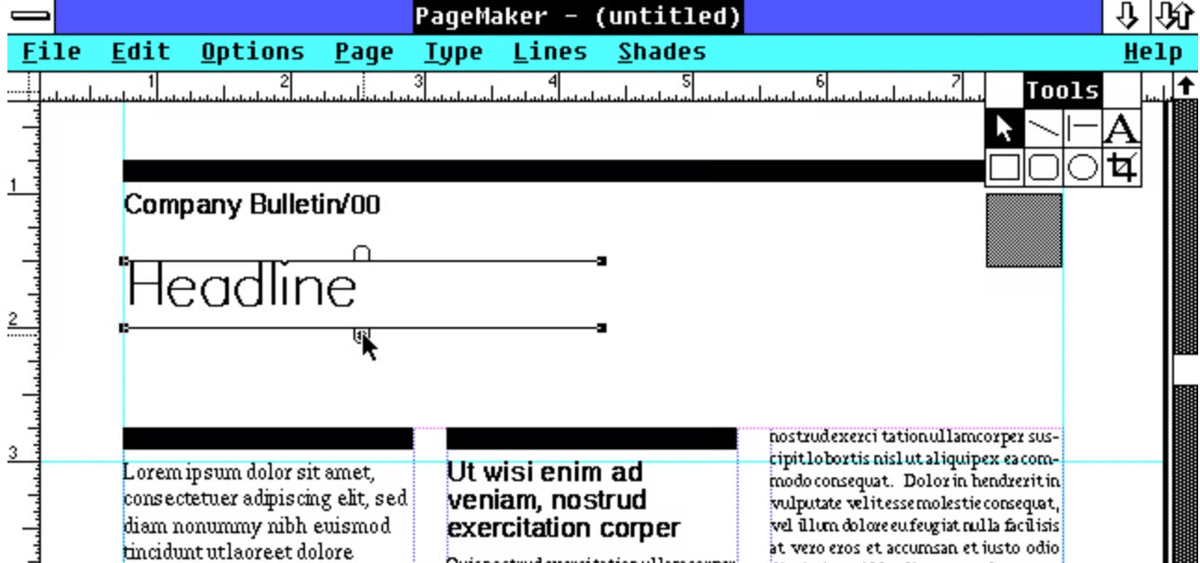The True Origins of Lorem Ipsum

“Lorem ipsum” is a shorthand for placeholder text, usually beginning with this not-quite-meaningful-Latin phrase. Many folk genealogies date the practice to the Latin-loving Renaissance humanists, and who knows? Maybe Aldus Manutius did have some dummy Latin that he liked to use to test a page design. But it probably wasn’t the same text we use today, and Aldus himself only enters the story in a marginal way.
Jack Shepherd argues persuasively for a much more recent lorem ipsum origin story.
The source text is definitely Cicero, although it’s two mishmashed quotes from De Finibus Bonorum et Malorum (About the Ends of Good and Evil) with words cut in half:

You’ll notice that this image, from the Loeb Classical Library 1914 opposing-face translation of Cicero’s work, doesn’t cut off “delorem ipsum,” or rather it does: this page is the second half of the cut. And that’s one clue that we have that this particular truncation of the text is a twentieth century practice, not a fifteenth century one.
The earliest example that anyone seems to have been able to find of Random Selections of the 1914 Loeb Facing Translation of Sections 1.10.32 and 1.10.33 of Cicero’s De Finibus Used as Dummy Text (aka, mercifully, Lorem Ipsum) is from the 1960s. At the time, if you wanted to mock up an ad or a flier for a punk show and you didn’t have a bunch of bespoke font settings on your Imperial Model 70 typewriter, your best bet was a British company called Letraset, which sold adhesive transfer sheets with different typefaces.
Letraset used Lorem Ipsum in their advertisements, and the layout-design software company Aldus (maker of the popular PageMaker layout tool) duplicated the practice in the ’80s, which is presumably the origin point of ChatGPT’s tall tale about Aldus Manutius using Lorem Ipsum in the 16th Century.

You might feel a little deflated by this revelation. You mean, that’s it? It’s been software all along? We don’t stand in a noble tradition of humanist lettersetters?
Ah, but the thing is we do! Nothing screams “Renaissance humanism” more than inventing a practice and then assigning it a venerable pseudo-archaic origin. Imitation here is genuinely the sincerest form of flattery. This is perfect.





Stay Connected